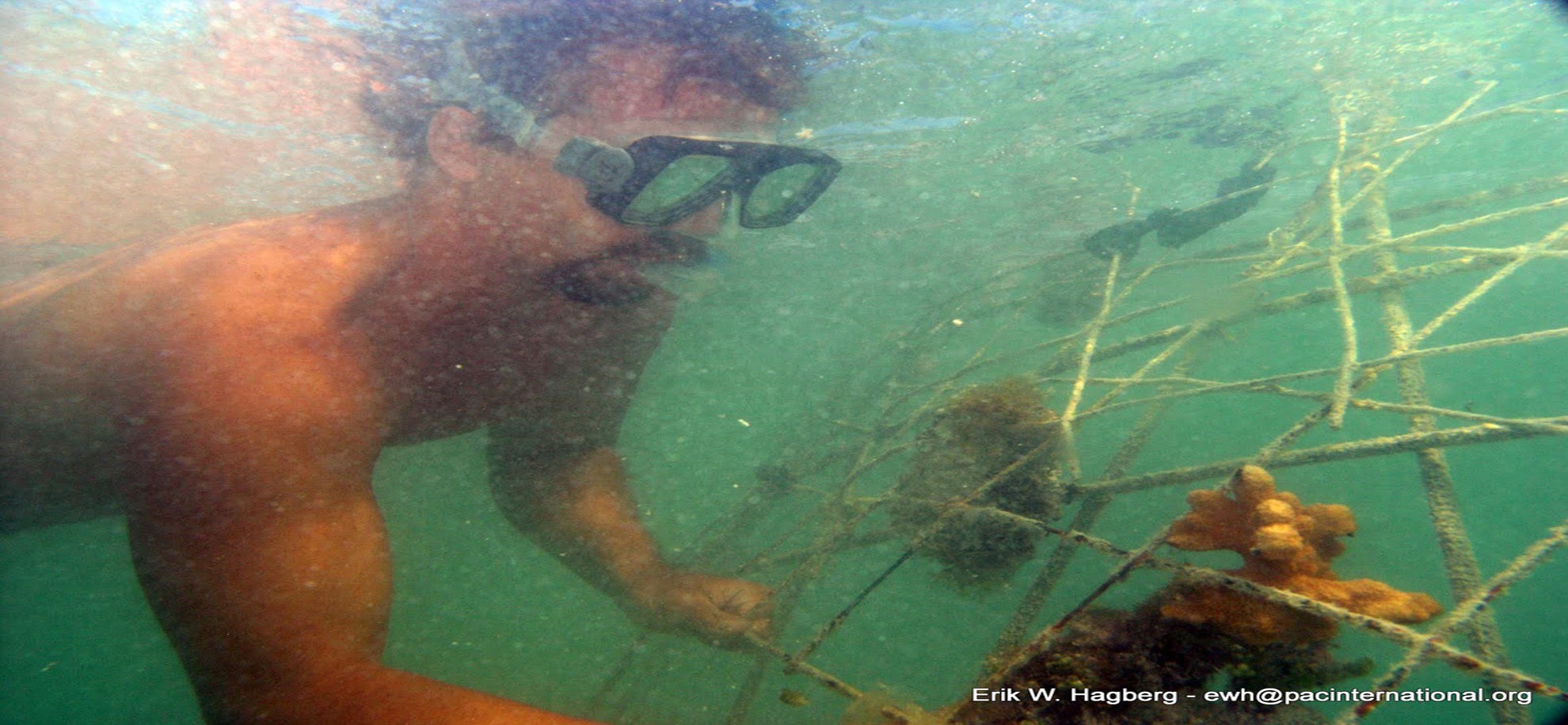What we do
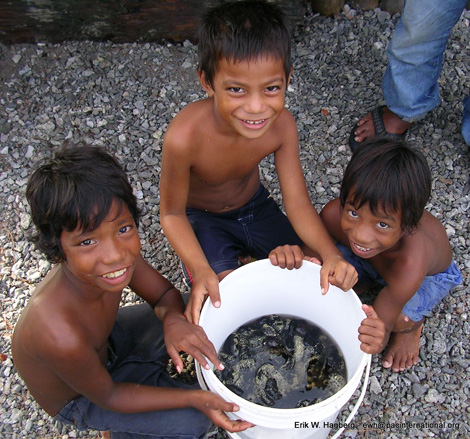
BUSINESS OPPORTUNITY
THE BUSINESS
Pacific Aquaculture Cooperatives International(PAC) is a global aquaculture business enterprise whose primary mission is to provide strategically engineered aquaculture solutions to the world aquaculture industry as a modus operandi of economic and environmental sustainability to SIDS(Small Island Developing States) and developing countries for economic development, environmental sustainability, and sustainability of the global food chain from the bottom up. This will be done by the development and deployment of sustainable sea cucumber farm operations in every coast lined country adjoined with educational training for local natives together wit ongoing collaboration and assignments with government, industry and scientific agencies. PAC International was established in 2005 and is an NGO affiliate with Consultive Status Accreditation to the United Nations Economic and Social Council.
PRODUCT
By developing custom designed programs of sustainable development consisting of: Aquaculture education and training; Enlisting the interaction and partnership of government, industry, scientific, and educational agencies for support and the dissemination of information; Enlistment of the world leading environmental scientists providing their expertise; and the apportionment of cutting edge technologies, equipments, and marine sea vessels; PAC will empower native residents to efficiently manage and utilize their natural marine resources. By maintaining a major equity position in each cooperative employee owned operation, PAC will insure the proper implementation and management of its business solutions in order to safeguard and promote environmental sustainability by the use of its proprietary aqua farming methodology that will exponentially increase sea cucumber population while maintaining the integrity of the coral reefs – its natural environment and thus ameliorate the damages of global warming; promote economic development through a jointly-owned and democratically-controlled enterprise, the standards of living are raised, quality health care and education becomes affordable, and by facilitating initial public offerings of each corporate cooperative, the prosperity of future generations are safeguarded. PAC’sstrategic business solutions are consistent with the United Nations Millennium Development Goals will therefore serve as a reliable and legitimate mechanism to assist world governments in achieving their MDG. See http://www.unmillenniumproject.org/goals/ The products that these corporate cooperatives in developing countries will farm, harvest, and market are scientifically known as Holothuroidea, or sea cucumbers, are an abundant and diverse group of worm-like and usually soft-bodied echinoderms. They are found in nearly every marine environment, but are most diverse on tropical shallow-water coral reefs. They range from the intertidal, where they may be exposed briefly at low tide, to the floor of the deepest oceanic trenches. Some of these are about 20 cm in length, though adults of some diminutive species may not exceed a centimeter, while one large species can reach lengths of 5 m (Synapta maculata). Several species can swim and there are even forms that live their entire lives as plankton, floating with the ocean currents. These sea cucumbers are widely consumed for food and as a traditional nutraceutical throughout Asian and Middle Eastern communities. It is so highly prized for its ability to fight arthritis pain and degeneration, for its anti-viral properties, as an aphrodisiac, and for regular consumption as a culinary component or in supplement form to promote overall good health.
THE MARKET
The seafood trade is one of the world's largest and fastest growing internaional commodity industries. Worth more than $60 billion a year, it exceeds the world trade in all grains combined and represents more than twice the combined world trade in all tea, coffee and cocoa. Almost 200 countries supply fish and seafood products to the global marketplace, consisting of more than 800 commercially important species of fish, crustaceans and mollusks, includuing 30 species of shrimp alone. With the aquaculture industry being slightly less than 10% of the world's seafood trade of reported annual sales of $60.9 billion, the global sea cucumber market is reported at approximately $4.6 billion. The global sea cucumber market, according to presentations made at the Food and Agriculture Organization of the United Nations (FAO) Summit in Rome of 2004, the production capacity of sea cucumbers for commercial purposes has been approximately 1.6 billion sea cucumbers from hatcheries around the world[1]. This brings the market value of sea cucumbers sold at US$23/kg (US$11.50/lb), a conservatively median average[2], would bring the value of 1.6 billion sea cucumbers from all registered hatcheries, according to the FAO Rome 2004 Summit Report, at US$4.6 billion carrying a daily volume of US$12.6 million. This is based on the assumption of 4 adult sea cucumbers equaling 2 metric pounds or 1 kilogram, as this article further asserts ( see Breeding and Rearing of Sea Cucumber Holothuria scabra in Viet Nam) that the average weight of one full grown juvenile is 250-350g ( ½ pound).
The world’s coast line at 889,086 m2 has a sales value of US$242,168,750,000 which, according to the prescribed assumptions, would be translated as 24,216,875,000 lbs or 10,984,589 metric tons of sea cucumbers. The world population of sea cucumbers in numbers can therefore be estimated at 12,108,437,500 which exists along the said coastlines.
Despite these enormous figures, the traditional demand for dried sea cucumber is far from being met.[3] Commercial fishing pressure of wild sea cucumber populations have already driven many species into local extinction and continue to endanger these creatures throughout their global range. Lack of supply is stifling growth of sea cucumber in other viable markets.[4]
Sea cucumber is widely consumed for food and as a traditional nutraceutical throughout Asian and Middle Eastern communities. It is so highly prized for its ability to fight arthritis pain and degeneration, for its anti-viral properties, as an aphrodisiac, and for regular consumption as a culinary component or in supplement form to promote overall good health.
PAC has a patent pending proprietary farming methodology capable of exponentially increasing existing sea cucumber populations. This revolutionary farming method will give PAC the ability to continuously generate sustainable harvests and provide a steady supply of sea cucumbers to the large demands of existing buyers, and expand sea cucumbers’ viability in emerging markets.
The global sea cucumber market is poised for tremendous growth in the pharmaceutical industry. Scientific studies are defining the healing properties of sea cucumbers, finding the high proportions of sulphated polysaccharides, glycoproteins, fucans, and lectins found in their body walls all show significant potential for development into marketable drugs for arthritis, caner treatments, HIV therapy, and other new medical treatments.
Introduction and utilization of new aquaculture technology and methodology will insure dramatic increases in productivity, customer base, and resulting success. PAC’s growth will also help to energize global interest and tourism in this region. With adequate funding, eco-sensitive and intelligent management, and shrewd product development, PAC can easily capture a significant chunk of the existing “wild catch” sea cucumber market through its exclusively “farmed” product, and expand the world sea cucumber market (currently valued at over US$4.6 billion) by 25% or more.
[1] The progress and prospects of studies on artificial propagation and culture of the sea cucumber, Apostichopus japonicus”, Sui Xilin, of the Marine Fisheries Research Institute, Liaoning Province, China
[2] Prices of Sea Cucumber In the International Market, INFOFISH Trade News, 1 October 2003, FAO Corporate Document Repository
[3] Present Status and Prospects of Sea Cucumber Industry in China, Jiaxin Chen, Yellow Sea Fisheries Research Institute, Qingdao, China, FAO Corporate Document Repository
[4] From the sea to the market place: an examination of the issues, problems and opportunities in unravelling the complexities of sea cucumber fisheries and trade, Mark Baine, University of Papua New Guinea, Papua New Guinea, See also FAO Corporate Document Repository of “Illegal Fisheries of Sea Cucumbers” Abstract Reports.
the market
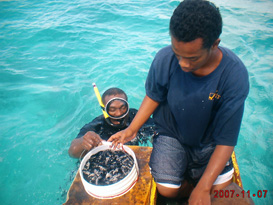
Local Partners Harvesting Sea Cucumbers
Local indigenous partners assisting in the harvesting of sea cucumbers where population is plenty
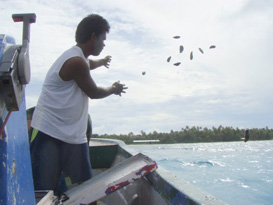
Seeding Marine Areas
A sustainable practice of throwing sea cucumber seedlings in marine protected areas (MPA) to preserve and promote population growth
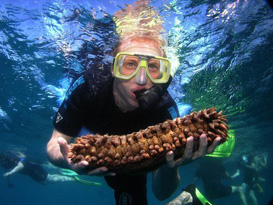
Catching a Sea Cucumber
Erik holding a sea cucumber in one of his diving expeditions
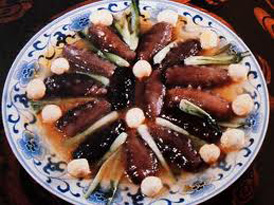
Sea Cucumber Dish
Deliciously prepared sea cucumber with vegetables in special seasoning and sauce that are both high in protein and efficacious in promoting health
our mission
Becoming a World Leader in Sustainable Aquaculture
PAC'S mission is to become a world leader in the sea cucumber farming industry, providing unique and innovative aquaculture solutions to third-world countries that promote sustainable economic, environmental, and human development.
Joint Venture Revenue Sharing
PAC offers trade, commerce, joint venture revenue sharing, sustainability of marine and other natural resources, and the propagation of new and nutritious foods, as well as new sources of biological material for production of the next generation of pharmaceutical wonder drugs.
Exemplify Social and Environmental Responsibility
PAC exemplifies social and environmental responsibility through the application of and training in practical sea farming methodologies that will create meaningful and productive jobs in less-developed countries.
testimonials
Sea cucumber fishing is very important to the livelihoods of coastal communities, particularly artisanal and small scale fishers in developing countries. Therefore, socio-economic issues in sea cucumber fisheries are important and should be recognized and incorporated in fishery management programmes. In particular, livelihood options should be made available to fishers if management regulation put restrictions on the fisheries, such as bans on fishing."Advances in Sea Cucumber Aquaculture and Management", the Fisheries Department of the Food and Agriculture Organization of the United Nations (FAO), 18 October 2003
Limitations in our current antiviral treatment options and the continuing emergence of new pathogenic viruses have contributed to a growing need for new and effective chemotherapeutic agents to treat viral diseases. The marine environment provides a rich source of chemical diversity for the screening and identification of new compounds with desirable antiviral properties. Many of the new and structurally distinct metabolites that have been found in marine algae, invertebrate animals, and microorganisms have pronounced biological activities and constitute a valuable chemical resource for the discovery of lead compounds that may aid in the development of new antiviral therapies."Current Medicinal Chemistry - Anti-Infective Agents", Volume 3, Number 3, September 2004, pp. 233-249
